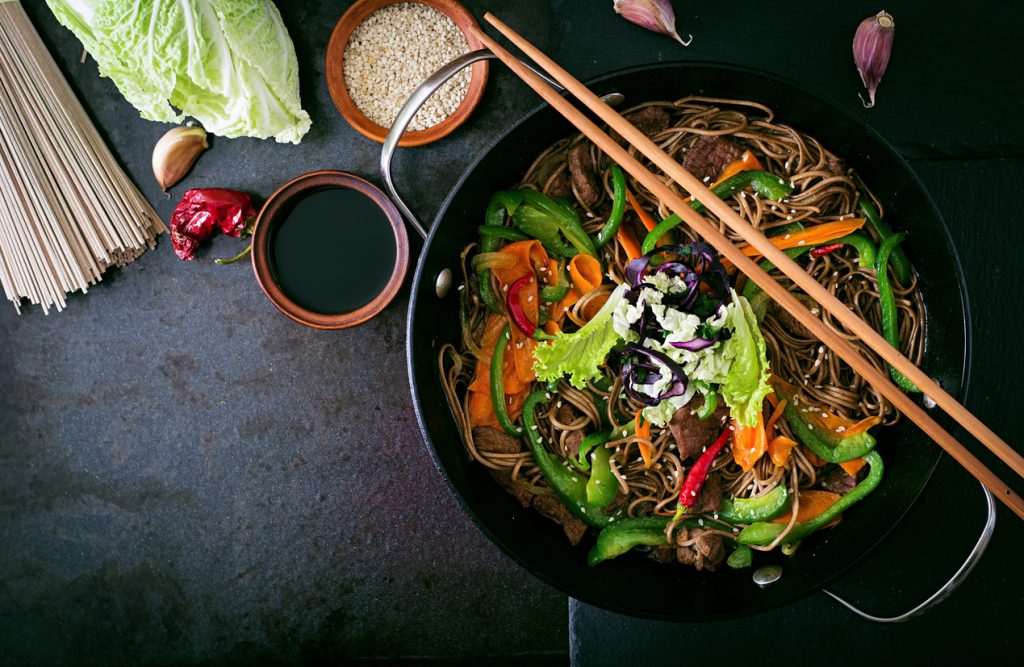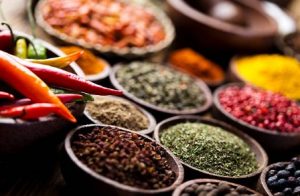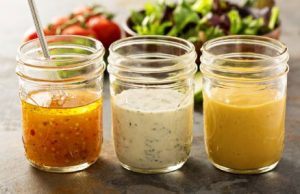
While it is extremely hard to describe the basics of a particular continental cuisine, there are certain factors which manage to encompass almost every country’s national food traditions. The first word that strikes the mind when one thinks of the Asia is – healthy. Japan has been widely recognized as the country in which people have the longest lifespan. The rest of the world is only now beginning to pay closer attention to the established Asian food practices and apply them in their daily cooking recipes. Let’s take a look at the role of the different dressings and seasoning in the Asian cuisine.
There are two defining factors in the typical Asian cuisine – love of fish and sea food, and the extended use of different spices and flavors. It is not uncommon for a meal on this continent to feature six or more different tastes. The most popular ones are salty, savory, sweet, spicy, sour, bitter, astringent (one which induces a puckering sensation), and let’s not forget about the specific Japanese umami – a brothy (or meaty) taste which lasts a long time.
Koreans also have their very own unique kimchi flavor. The spice itself is made from dried and ground vegetables and is extremely hot, so don’t be too generous when putting it on a meal. Indian traditional food likes to include lots of ginger, garlic, saffron, and garam masala into their typical meals, while the Chinese are infamous for their use of red chili oil from the Sichuan region.
The thing which unites all of them is their love for detail, discipline, as well as for harmony and balance. This is also entirely in compliance with their established religious practices. Even though a meal may feature more than 10 separate ingredients, it will still be mouth-warming and delicious.
This wide variety of tastes and flavors is attributed to the fact that Asian countries have an expanded territory and are separated by vast longitudes of sea and land. Some spices are found naturally in some regions of the continent, while others – in more distant ones.
Bad Eating Habits That You Should Forget
How to Use Dressings & Seasonings in Asian Cuisine
Balance in Meal Preparation
 Asians are quite the organized people. This trait of theirs is quite prominent and they are well-respected for it. The main difference between people from the Western world and them is that our national traditions tend to divide the products into different food groups right from the preparation process.
Asians are quite the organized people. This trait of theirs is quite prominent and they are well-respected for it. The main difference between people from the Western world and them is that our national traditions tend to divide the products into different food groups right from the preparation process.
We also do the same when it comes to the serving of the meal. Asian cuisine takes things to a whole new level and adds not only a mixture of different spices, herbs, and ingredients but also many separate textures which manage to blend together perfectly.
Balance and precision are actually the key ingredients in Asian cuisine. A lot of attention is also paid to whether the meal is served cold, hot, dry, moist, heavy or light. This is done in order to ensure that proper digestion is achieved after the food is eaten.
Meat products are also not that extensively used. Rice and vegetables, on the other hand, are main components. The same goes for dressings and seasonings. In Asia, it is common to add sesame oil, fish sauce, citrus juice, or soy sauce to salad dressings.
Seasoning & Dressings in Asian Cuisine
 Another defining moment for traditional Asian cuisine is their love of different spices and herbs. Seasoning and dressings are also extensively used to enhance not only the taste of a given meal but also make it easier for the body to break down the separate components and not go through any tedious stomach aches or troubles.
Another defining moment for traditional Asian cuisine is their love of different spices and herbs. Seasoning and dressings are also extensively used to enhance not only the taste of a given meal but also make it easier for the body to break down the separate components and not go through any tedious stomach aches or troubles.
They have a particular fondness for condiments. The said can be sambals, chutneys, and dals. Another typical feature is it is not uncommon for them to be made out of chili peppers, fish, tamarind, garlic or any other leafy spice.
Most of the seasonings and dressings can be quite hot. The ones that are best known are fish sauce, sesame oil, soy sauce, Sriracha, chili garlic sauce, and sambal trassi.
Since most of the different spice blends are not grown in one and the same region, apart from curry, the separate parts of the continent have their own unique styles.
A Wide Variety of Spice Blends
Eastern Asia is infamous for its regular use of these spice blends – Japanese Seven Spice, Teriyaki Blend, Hoisin Sauce Blend, Fermented Bean Seasonings, while Southern Asia focuses more on the ones that include curry. They also like to add several layers to a meal which means that it is often combined with coconut fruit or oil.
A visit to the Southeastern part of Asia means that the dressing and seasonings will be extremely hot and spicy. They usually have a strong fragrance which makes the meals a perfect mixture between spicy and sweet.
Asian Dressings & Seasonings – Hot but Delicious
 Not everyone likes spicy food. But one of the things which make meals that are seasoned with hot dressings or sauces so healthy is the fact that it has the ability to kill off bacteria and protect from parasitic infections.
Not everyone likes spicy food. But one of the things which make meals that are seasoned with hot dressings or sauces so healthy is the fact that it has the ability to kill off bacteria and protect from parasitic infections.
Asian cuisine and its specific characteristics are not a spoon for every person’s taste but it is definitely worth the try.


